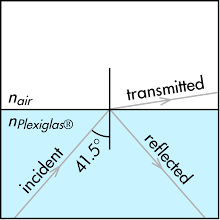Cuesta College, San Luis Obispo, CA
In the movie Oblivion (Universal Pictures, 2013), Earth's moon is broken into a large irregular-shaped fragment surrounded by much smaller debris, presumably all of which orbit Earth. Classify the large irregular-shaped fragment, using the International Astronomical Union classification scheme.
Solution and grading rubric:
- p:
Correct. Of the three IAU requirements (orbits the sun, has a rounded shape, cleared/dominates its orbit) this large fragment fails all three, but failing the first requirement classifies it as a satellite/moon of Earth. - r:
Nearly correct (explanation weak, unclear or only nearly complete); includes extraneous/tangential information; or has minor errors. Understands which IAU requirements this large fragment satisfies or does not satisfy, but misclassifies typically as solar system debris. - t:
Contains right ideas, but discussion is unclear/incomplete or contains major errors. Problematic discussion of IAU requirements. - v:
Limited relevant discussion of supporting evidence of at least some merit, but in an inconsistent or unclear manner. Discussion only tangentially related to the IAU requirements. - x:
Implementation/application of ideas, but credit given for effort rather than merit. Discussion unrelated to the IAU requirements. - y:
Irrelevant discussion/effectively blank. - z:
Blank.
Section 30674
Exam code: finalnNz2
p: 12 students
r: 6 students
t: 6 students
v: 0 students
x: 1 student
y: 1 student
z: 1 student
Section 30676
Exam code: finals56G
p: 8 students
r: 16 students
t: 2 students
v: 7 students
x: 4 students
y: 1 student
z: 1 student
A sample "p" response (from student 8387):

Another sample "p" response (from student 1019):

A whimsical sample "y" response (from student 9999):







































